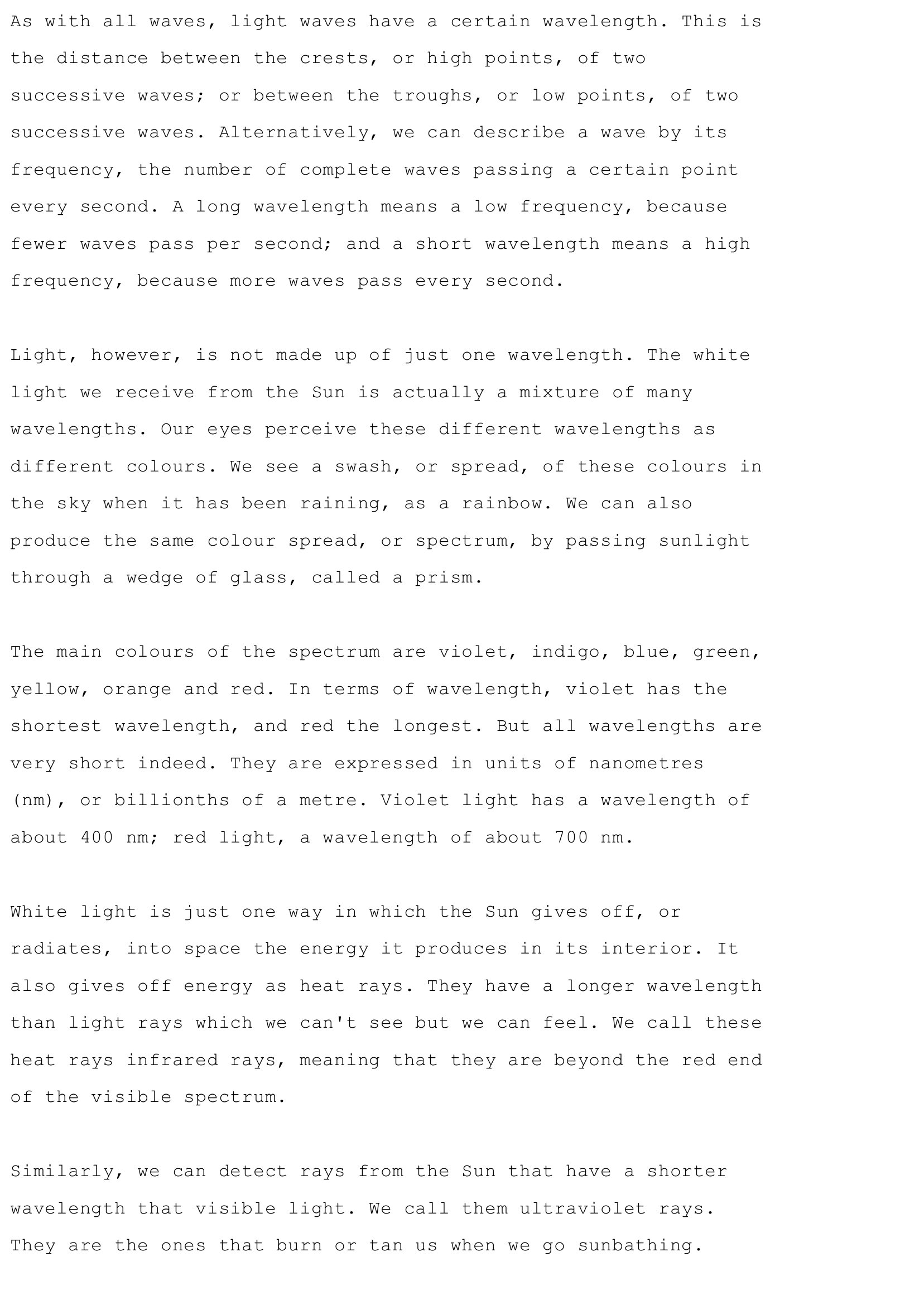LIGHT, RADIATION AND TELESCOPES
Publié le 17/01/2022
Extrait du document
«
As with all waves, light waves have a certain wavelength.
This is
the distance between the crests, or high points, of two
successive waves; or between the troughs, or low points, of two
successive waves.
Alternatively, we can describe a wave by its
frequency, the number of complete waves passing a certain point
every second.
A long wavelength means a low frequency, because
fewer waves pass per second; and a short wavelength means a high
frequency, because more waves pass every second.
Light, however, is not made up of just one wavelength.
The white
light we receive from the Sun is actually a mixture of many
wavelengths.
Our eyes perceive these different wavelengths as
different colours.
We see a swash, or spread, of these colours in
the sky when it has been raining, as a rainbow.
We can also
produce the same colour spread, or spectrum, by passing sunlight
through a wedge of glass, called a prism.
The main colours of the spectrum are violet, indigo, blue, green,
yellow, orange and red.
In terms of wavelength, violet has the
shortest wavelength, and red the longest.
But all wavelengths are
very short indeed.
They are expressed in units of nanometres
(nm), or billionths of a metre.
Violet light has a wavelength of
about 400 nm; red light, a wavelength of about 700 nm.
White light is just one way in which the Sun gives off, or
radiates, into space the energy it produces in its interior.
It
also gives off energy as heat rays.
They have a longer wavelength
than light rays which we can't see but we can feel.
We call these
heat rays infrared rays, meaning that they are beyond the red end
of the visible spectrum.
Similarly, we can detect rays from the Sun that have a shorter
wavelength that visible light.
We call them ultraviolet rays.
They are the ones that burn or tan us when we go sunbathing..
»
↓↓↓ APERÇU DU DOCUMENT ↓↓↓
Liens utiles
- Song of the Open Road Leaves of Grass, 1900 Walt Whitman 1 Afoot and light-hearted, I take to the open road, Healthy, free, the world before me, The long brown path before me, leading wherever I choose.
- Lucina Roman An ancient Italian goddess of light and childbirth.
- Theia (Radiant) Greek A first-generation Titan goddess of sight and the shining light of the blue sky; daughter of Gaia and Uranus; mother, with Hyperion, of the gods who brought light to humans: Helios (Sun), Selene (Moon), and Eos (Dawn).
- Erytheia (Erythia; Dazzling Light) Greek A Dryad, or wood Nymph; one of the sisters known as the Hesperides; either the daughters of Erebus (Darkness) and Nyx (Night) or the daughters of Atlas and Pleione or Hesperis.
- American Literature: Poetry I INTRODUCTION Phyllis McGinley American poet and author Phyllis McGinley composed light, witty verse, much of which deals with family life.


